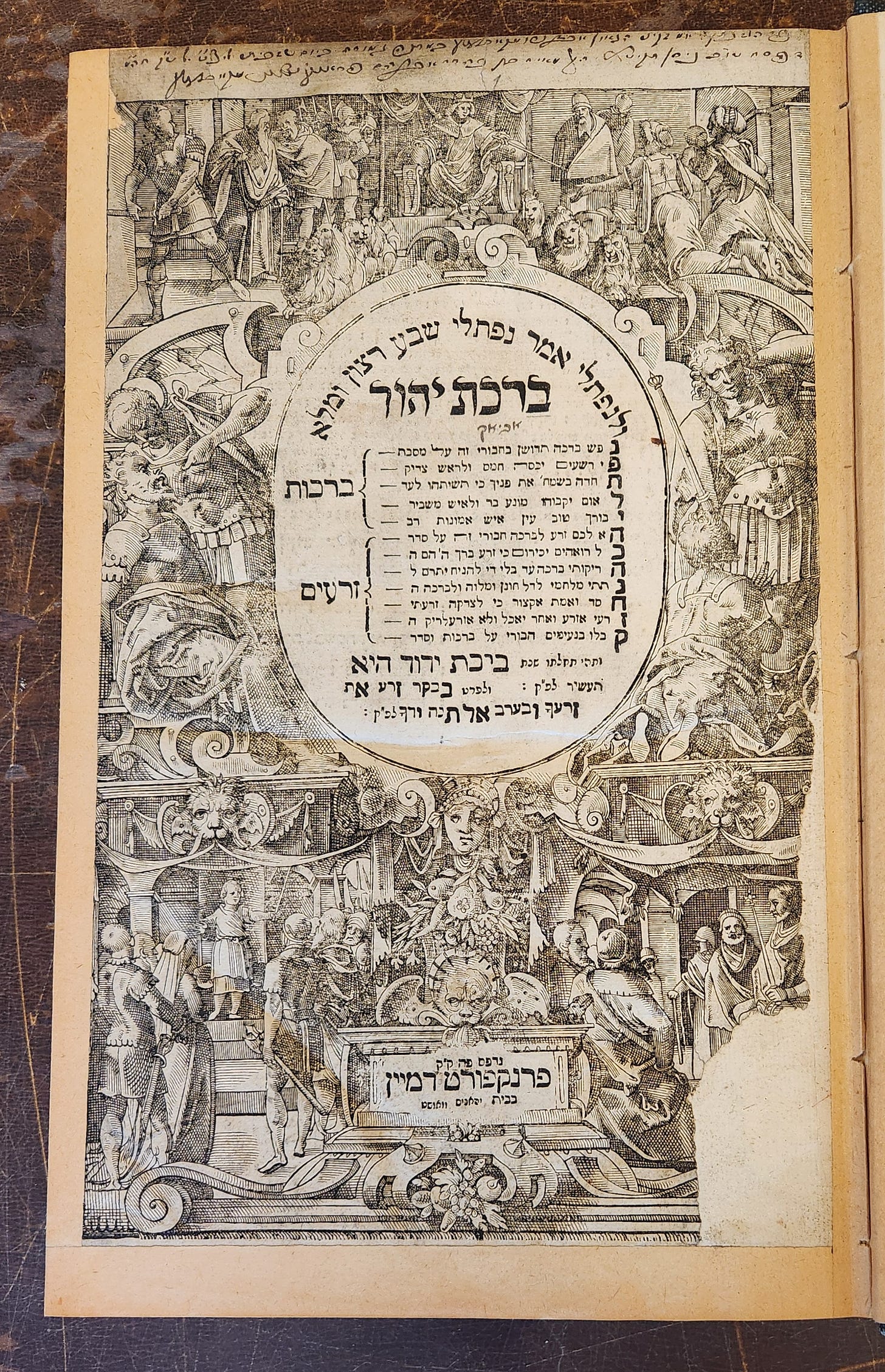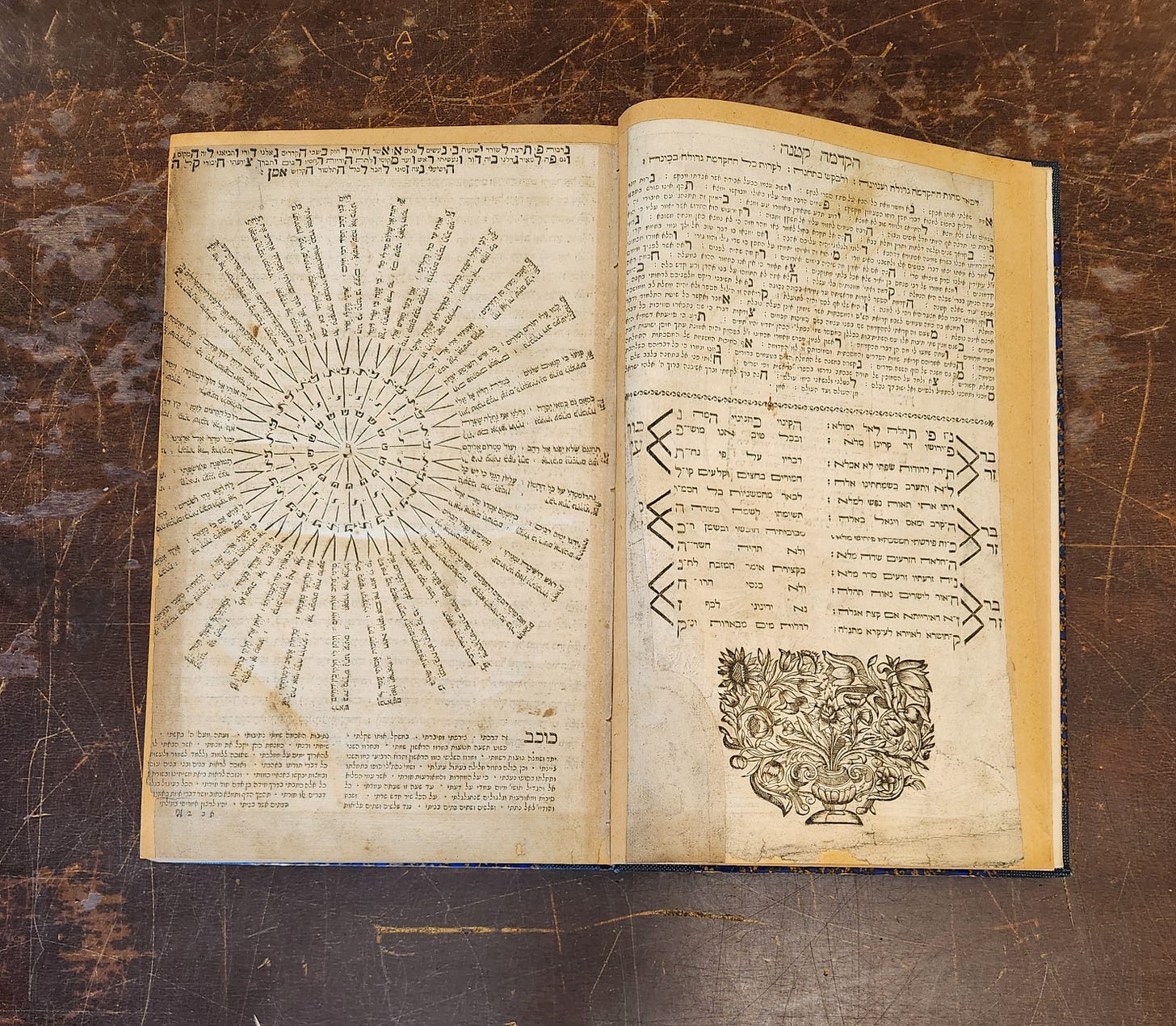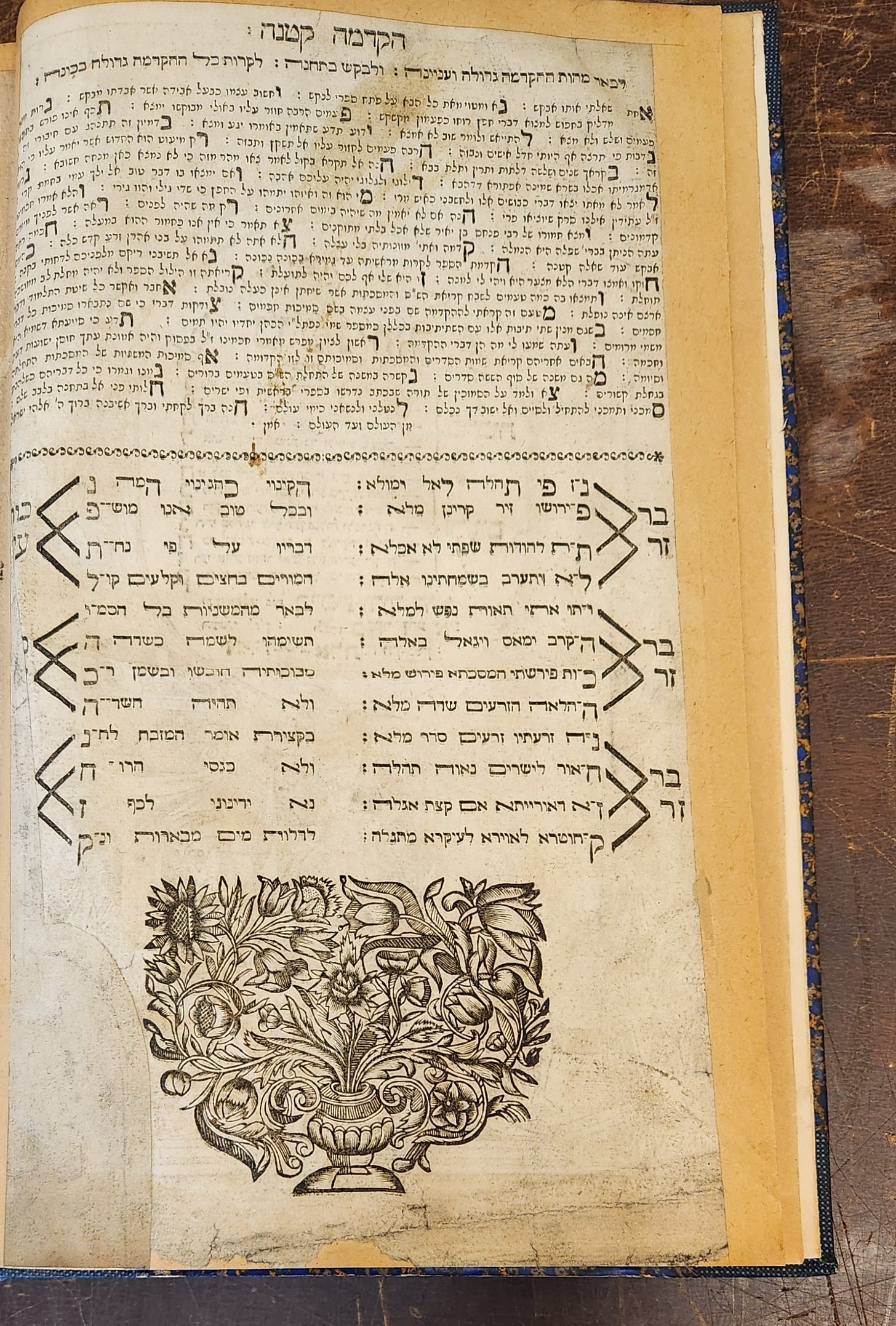A Premier Kabbalist and Miracle Worker
The Extraordinary Life and Works of Rabbi Naftali ha-Kohen Katz
A portrait of Rabbi Naftali Katz by Johann Andreas Benjamin Nothnagel
Early Years in Ostroh (Ostróg)
Rabbi Naftali (ben Yitzchak) ha-Kohen Katz was born around 1650 in Ostroh (Ukraine) to a prominent rabbinic family. Naftali was named for his grandfather, a prominent rosh yeshiva and av beis din in Lublin. His great-grandfather, Rabbi Yitzchak Katz, was a son-in-law of the venerated Maharal of Prague.
As a young teenager, Rabbi Naftali Katz was captured by the Tartars. As he reflects in his writings, after several years he miraculously managed to escape and returned to his parents home in Ostroh. When he reached marital age, Rabbi Katz married Esther, a daughter of the eminent rabbi and av beis din of Ostroh, Rabbi Shmuel Shmelkah. Shortly after his marriage, Rabbi Shmuel Shmelkah (who was a man of great means) appointed his son-in-law to head the yeshiva which he had established. After Rabbi Shmuel Shmelkah’s passing, Rabbi Naftali Katz assumed the positions of rabbi and av beis din as well.
Poznan (Posen)
Several years later, Rabbi Katz received the prestigious invitation to serve as the rabbi of Poznan (Posen), a position which was previously held by Rabbi Yeshayah Horowitz, a grandson of the Shelah ha-Kadosh.
The following fascinating story (recounted in Chut ha-Meshulash) which occurred in Poznan illustrates Rabbi Naftali Katz’s mastery of Kabbalah:
As an aside, I will mention a wondrous matter: When I was in Poznan, in the home of my grandfather, the gaon, Rabbi Akiva Eiger, I saw the head of a deer affixed to the wall. I inquired about the nature of this and was informed that Rabbi Naftali Katz affixed the deer head when he arrived in Poznan to serve as rabbi. Inside the head of the deer he had placed a paper inscribed with Divine names. From then on, a fire did not burn down homes on that street. When my grandfather, Rabbi Akiva Eiger, came to the city of Poznan, he removed the paper with the Divine names, inspected it, and returned it to its place. Until this day there hasn’t been a fire there.
Frankfurt am Main
After nearly fifteen years in Poznan, Rabbi Katz moved to Frankfurt am Main to serve as its rabbi. It was in Frankfurt that Rabbi Katz wrote a responsum about one of the most controversial halachic questions of the time - concerning a chicken that was slaughtered and found without a heart. Like his colleague the Chacham Tzvi, Rabbi Katz ruled that the chicken was permitted citing his own previous ruling in the same scenario well as that of his illustrious ancestor, the Maharal of Prague. Among those who prohibited the chicken was Rabbi Yonasan Eybeschutz.
Forced Out of Frankfurt
In the winter of 1711, a fire broke out in Rabbi Katz’s home which subsequently spread and destroyed more than five hundred homes in the Jewish quarter. As a result of the devastation, eight thousand people sought shelter in the homes of their gentile neighbors.
A number of fabrications were produced to explain how and why the fire spread (one claimed that Rabbi Katz refrained from extinguishing the fire in an attempt to test the potency of his Kabbalistic amulets). These accusations led to Rabbi Katz’s arrest and imprisonment. Eventually Rabbi Katz proved his innocence and was released from prison, however his rabbinic career in Frankfurt had come to an end.
Prague
During his brief stay in Prague, Rabbi Naftali Katz joined the staff of the yeshiva headed by Rabbi Dovid Oppenheim. It was around this time that Rabbi Katz encountered the crypto-Sabbatean Nechemiah Chiyun and inadvertently wrote a haskamah (approbation) to his work of heresy, Oz L’Elohim. Chiyun achieved this haskamah because he concealed the parts of his work which contained explicit Sabbatean heresy. After realizing the truth about Chiyun’s work, Rabbi Katz attempted to withdraw his endorsement although this proved to be a difficult task. Ultimately, Rabbi Katz firmly denounced Chiyun and his publications by joining Rabbi Tzvi Hirsch Ashkenazi (Chacham Tzvi) in his campaign against Nechemiah Chiyun and other Sabbatean followers.
Breslau
Rabbi Naftali Katz subsequently moved to Breslau where he personally arranged the shidduch of his granddaughter (daughter of Rabbi Mordechai Katz, av beis din of Brody) to Rabbi Yakov Emden, a son of the Chacham Tzvi. [As an aside, Rabbi Yakov Emden, in his autobiography Megilas Sefer, describes the process of how his match was arranged providing fascinating insight into the matchmaking process among the rabbinic elite in the early 18th century.]
Final Years
After a brief stay in Poznan, Rabbi Katz returned to his hometown - Ostroh where his son Rabbi Betzalel served as rabbi. In 1719, notwithstanding his advanced age (he was nearly seventy at the time), Rabbi Katz decided to emigrate to Eretz Yisrael [some suggest that was invited to become the chief rabbi of Tzfas]. Despite his deep yearning for the Holy Land, Rabbi Naftali Katz died before he had the opportunity to set foot on its sacred soil. While passing through Constantinople, Rabbi Katz fell ill and passed away shortly thereafter.
The following legend is told regarding Rabbi Naftali Katz’s passing:
The Ba’al Shem Tov wished to emigrate to Eretz Yisrael but after reaching Constantinople, he returned to his home in Medzhybizh. The Chasidim relate the reason that the Besht abandoned his plans: While in Constantinople Rabbi Naftali Katz appeared to the Besht in a dream and told him that he too wished to emigrate to Eretz Yisrael but since it wasn’t preordained, he died in Constantinople. Rabbi Katz warned the Besht that he too wasn’t supposed to emigrate to Eretz Yisrael and if he were to continue his journey, he would pass away.
A Distinguished Kabbalist
The Chida writes:
והיה מקובל מופלא קבלה מעשית ואלקית וזכה שבניו וחתניו רבנים מופלגים
He was an incredible Kabbalist, in practical Kabbalah and Divine Kabbalah. He merited sons and sons-in-law who became outstanding rabbis.
Writings
Rabbi Naftali Katz was a renowned Talmudist and Kabbalist. His published works include Pi Yesharim, a Kabbalistic treatise on the first word of the Torah - בראשית, and Birchas Hashem (or Birchas Yehud, as it appears on the title page of the 1704 Frankfurt edition featured below). The later work contains two parts: the first is a lengthy introduction titled Semichas Chachamim which explores the name of each tractate and the connection between one tractate and the next. These explanations are based upon the four dimensions of interpretation called Pardes and include many profound Kabbalistic ideas. The second part titled Kedushah u’Berachah, is a commentary on meseches Berachos. He also left over a tzavah (an ethical will). In addition, eighty-three approbations that he wrote for sefarim of others were collected and recently published.
Birchas Hashem, Frankfurt, 1704.
Images courtesy of the Klau Library, Cincinnati, HUC-JIR








Fabulous! B”H I found your page!
Vilna Gaon
https://edwardnathanschwarz.substack.com/p/666-riddle-me-this?r=5e930t